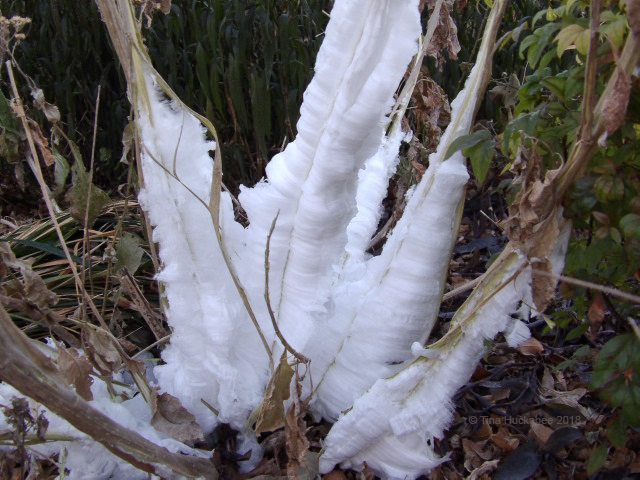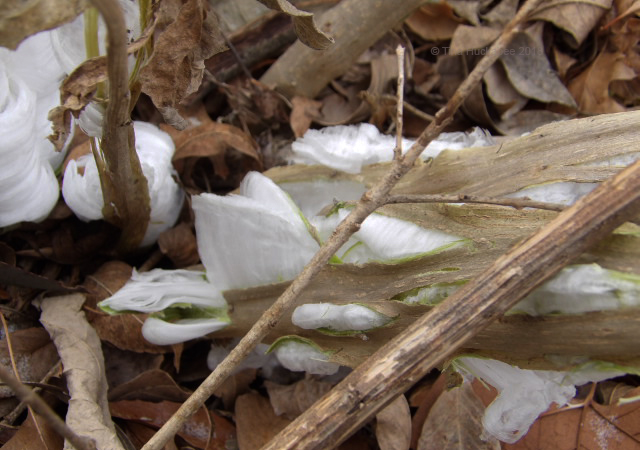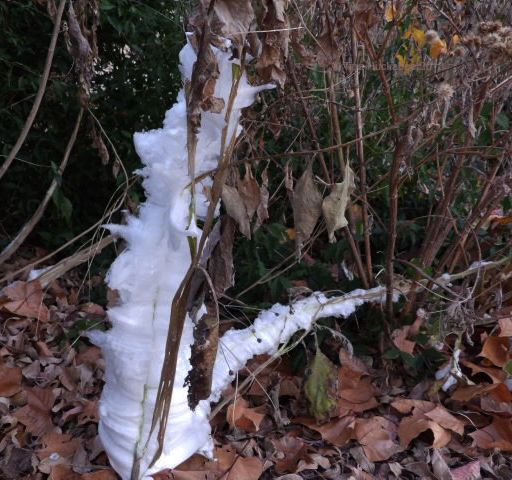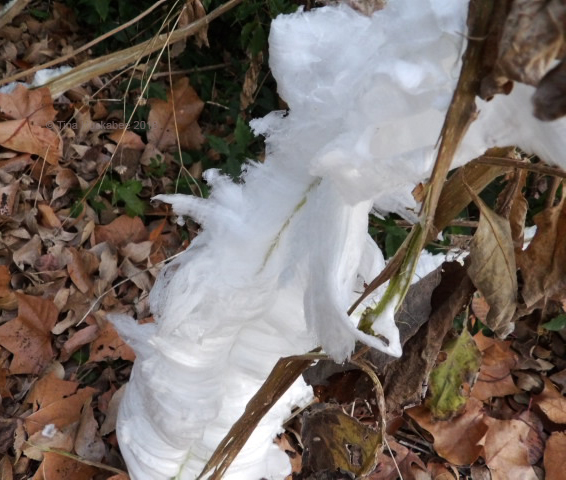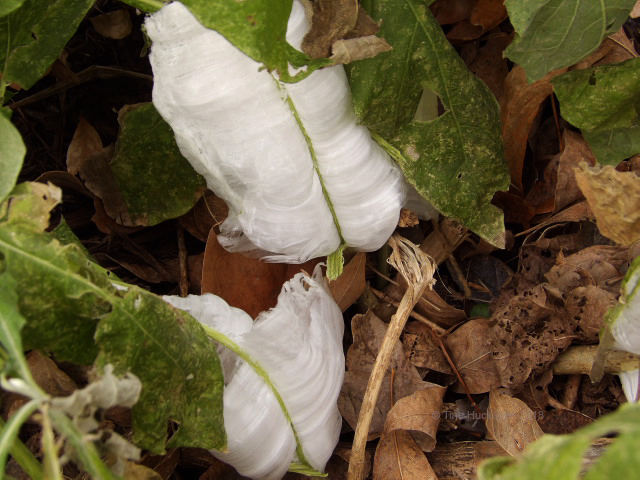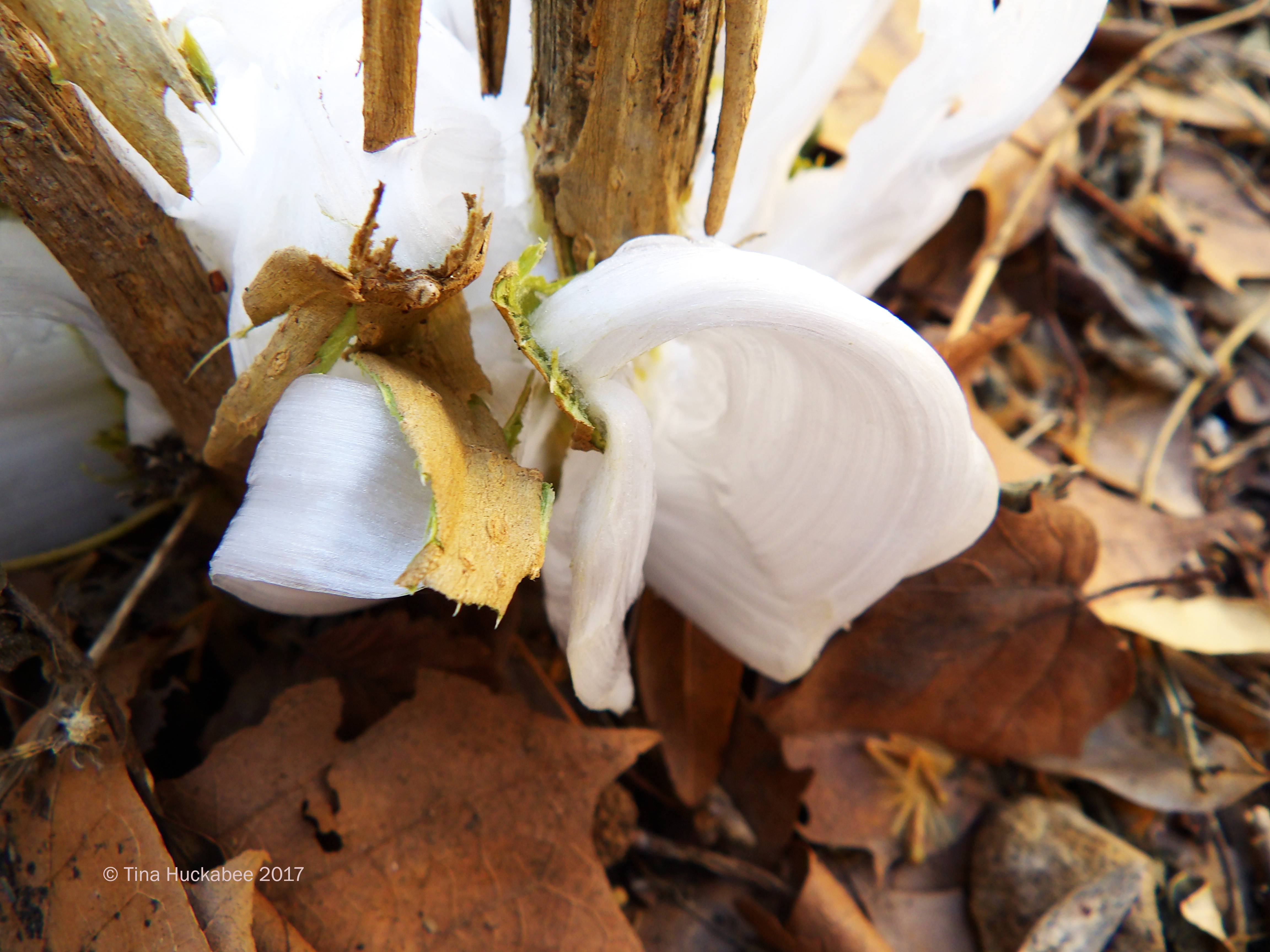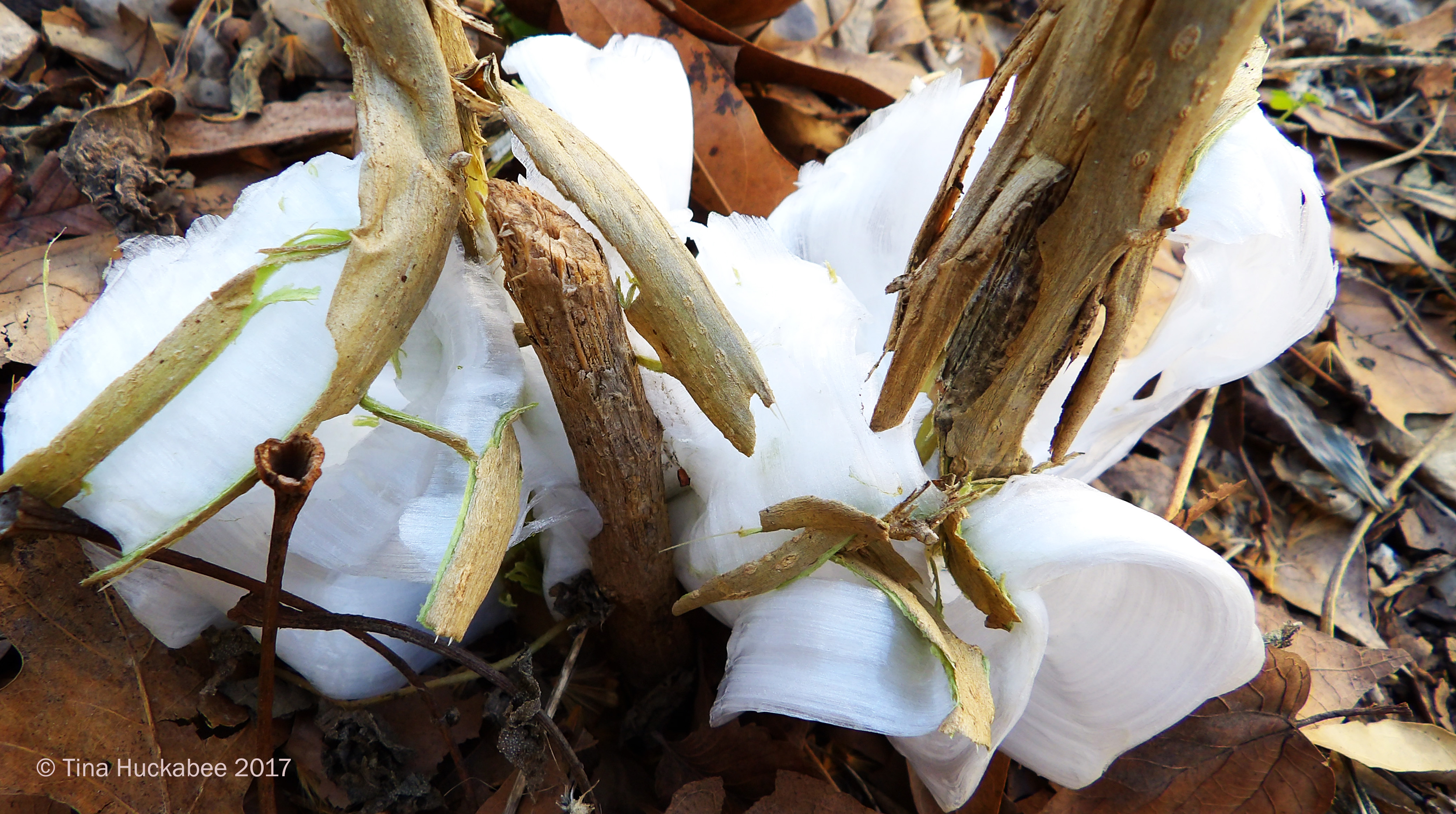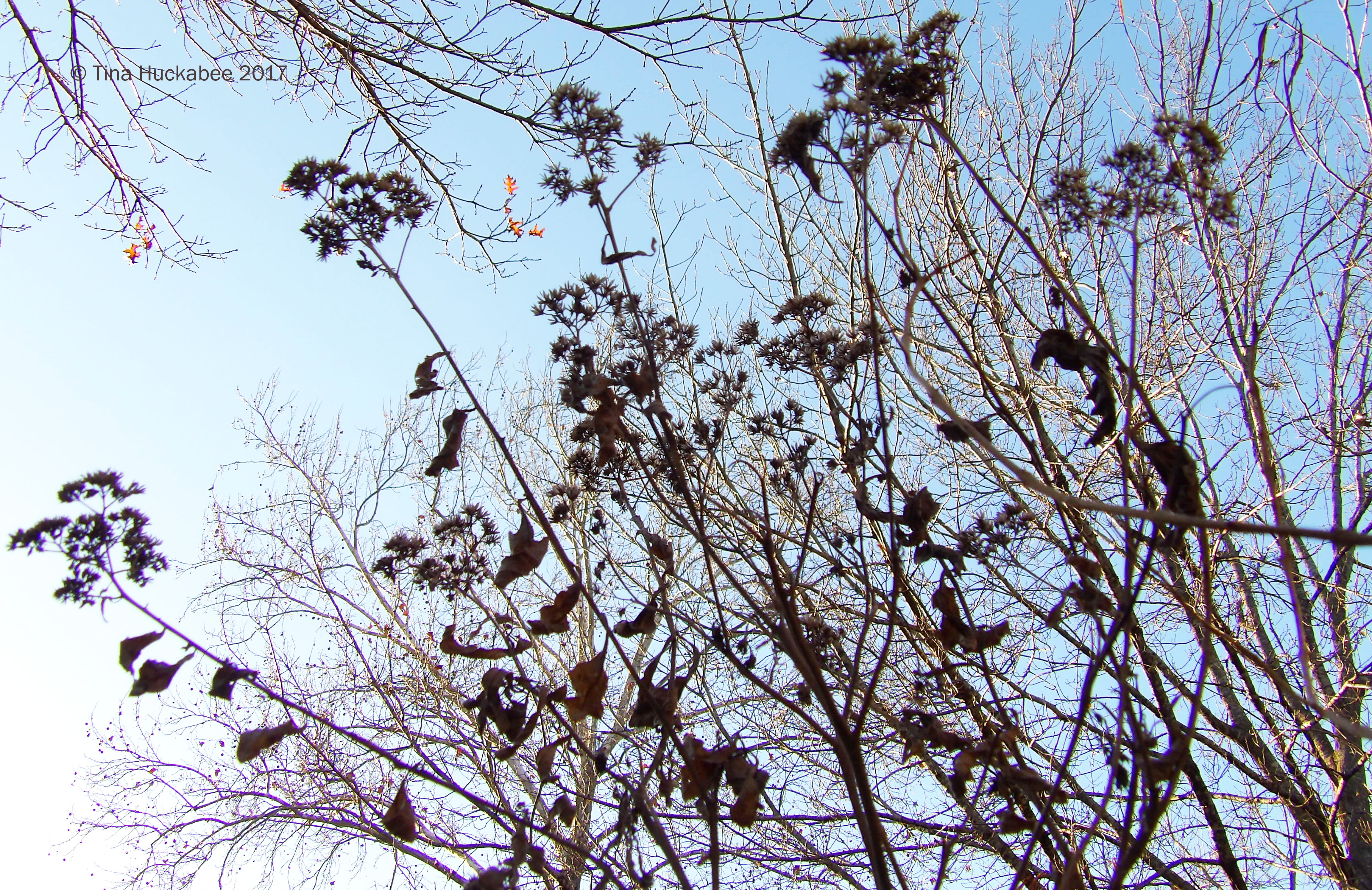With each of this winter’s freezes and accompanying ice, I’ve assumed that the plants which create ice sculptures are done with their frosty shows until next winter. But with the latest round of mid-to-low 20s, more curling and swirling appeared, some on plants thus far unmolested by the cold, and some on plants that previously froze and were pruned.
These cut stems are all that remain of a mature Frostweed, Verbesina virginica, that I pruned in late January after an earlier hard freeze. Clearly though, there was just enough stem material left for the ice fairies to appear.

I hoped that the Mexican Honeysuckle, Justicia spicigera, would be spared a killing freeze this year and remain green. That hope was dashed Thursday and Friday as temperatures dipped to the lowest point so far this year. The wilted mush of the once bright green foliage will require pruning to the ground for each of these shrubs in my garden to make room for new growth.
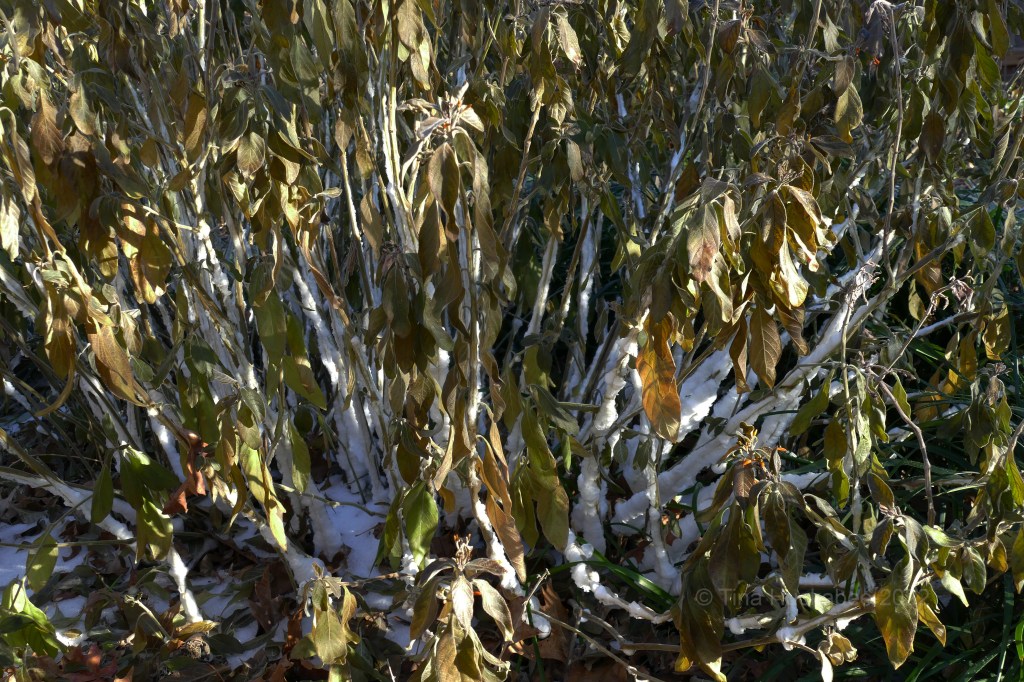
On the positive side, the water-turned-ice-crystals in the stems created some lovely, if short-lived ice art.





I’m now in full winter perennial pruning mode. When I prune herbaceous perennials I typically leave 8 to 10 inches of stems, sometimes more. On the remains of a Plateau Goldeneye, Viguiera dentata, the ice formed, puff pastry style.

I think the January/February 2022 plant ice capades has completed its final act. After the upcoming year of growth, it’ll be interesting to see if early freezes in November/December bring an encore performance.

